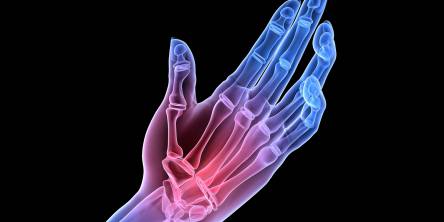What Is The Possible Cancer Treatment?

A medical procedure can treat cancer, chemotherapy, radiation treatment, hormonal treatment, directed treatment (counting immunotherapy, for example, monoclonal counter acting agent treatment), and engineered lethality.
The decision of treatment relies on the area and grade of the tumor and the phase of the ailment, just as the general condition of the patient (execution status).
Dr. Vikas Goswami believes malignancy genome sequencing helps in figuring out which disease the patient precisely has for deciding the best treatment for the malignant growth. Various trial disease medications are additionally work in progress. Under current assessments, two out of five individuals will have disease sooner or later in their lifetime.
1. Synthetic Lethality
Synthetic lethality emerges when a mix of lacks in the statement of at least two qualities prompts cell passing, while an inadequacy in just one of these qualities doesn't. The insufficiencies can emerge through changes, epigenetic adjustments, or inhibitors of either of the qualities.
Cancer cells are often lacking in a DNA fix quality. (Likewise, observe DNA fix insufficiency in malignancy.)
This DNA fix deformity either might be because of transformation or, regularly, epigenetic quieting (see epigenetic hushing of DNA fix).
If this DNA fix deformity is in one of seven DNA fix pathways (see DNA fix pathways) and a remunerating DNA fix pathway is hindered, at that point, the tumor cells might be slaughtered by engineered lethality. Non-tumorous cells, with the underlying pathway flawless, can endure.
2. Medical Procedure
In principle, non-hematological diseases can be restored if completely expelled by a medical procedure. However, this isn't constantly conceivable.
At the point when the disease has metastasized to different locales in the body before a medical procedure, complete careful extraction is generally outlandish.
In the Halstedian model of malignant growth movement, tumors develop locally, at that point spread to the lymph hubs, at that point to the remainder of the body.
This has offered to ascend to the prominence of the neighborhood just medications, for example, a medical procedure for little malignant growths. Indeed, even little limited tumors are progressively perceived as having metastatic potential.
Instances of surgeries for malignant growth incorporate mastectomy for bosom disease, prostatectomy for prostate disease, and lung malignancy medical procedure for non-little cell lung malignancy.
The objective of the medical procedure can be either the expulsion of just the tumor or the whole organ.[7] A solitary malignancy cell is invisible to the unaided eye yet can regrow into another cancer, a procedure called repeat.
Therefore, the pathologist will look at the particular example to decide whether an edge of solid tissue is available, in this manner diminishing the opportunity that tiny malignant growth cells are left in the patient.
3. Radiation Treatment
Radiation treatment might be utilized to treat pretty much every sort of solid tumor, including malignancies of the cerebrum, bosom, cervix, larynx, liver, lung, pancreas, prostate, skin, stomach, uterus, or delicate tissue sarcomas.
Radiation is likewise used to treat leukemia and lymphoma.
The radiation portion to each site relies upon various components, including the radio affectability of every malignancy type and whether there are tissues and organs close by that might be harmed by radiation.
Hence, similarly, as with each type of treatment, radiation treatment isn't without its reactions.
4. Chemotherapy
Chemotherapy is the treatment of malignant growth with drugs ("anticancer medications") that can crush disease cells.
In current use, the expression "chemotherapy" for the most part alludes to cytotoxic medications, which influence quickly partitioning cells all in all, interestingly with focused treatment (see beneath).
Chemotherapy drugs meddle with cell division in different potential manners, for example, with the duplication of DNA or the division of recently framed chromosomes.
5. Immunotherapy
Cancer immunotherapy alludes to a different arrangement of helpful techniques intended to initiate the patient's insusceptible framework to battle the tumor.
Contemporary techniques for creating a resistant reaction against tumors incorporate intravesical BCG immunotherapy for shallow bladder malignancy, and utilization of interferons and different cytokines to prompt an insusceptible response in renal cell carcinoma and melanoma patients.
Disease immunizations to produce explicit resistant reactions are the subject of serious research for various tumors, remarkably deadly melanoma, and renal cell carcinoma.
Sipuleucel-T is an immunization like methodology in late clinical preliminaries for a malignant prostate growth in which dendritic cells from the patient are stacked with prostatic acid phosphatase peptides to prompt a particular invulnerable reaction against prostate-determined cells.
Similar Articles
Rheumatoid arthritis (RA) is a type of autoimmune disease that occurs when the body's immune system attacks the lining of joints, causing inflammation and causing symptoms like pain and stiffness. RA usually affects both sides of the body in a similar way, but small joints of the hands and feet are often affected first, often knuckle joints of the fingers.
An electroencephalogram (EEG) is a test that measures the electrical activity in the brain. Healthcare experts utilize it to evaluate and comprehend neurological illnesses, sleep disorders, and brain damage.
So, your back decided to stage a mutiny and gift you with a herniated disc. Lovely. Now what? If you’re imagining a future filled with endless discomfort and groaning every time you get out of bed, don’t fret. There are plenty of ways to tackle a herniated disc and get back to living your best, pain-free life.
Back pain – it’s not just a matter of “I lifted a heavy box, and now my back hurts.” It’s often the result of a complex dance between our minds and bodies, with stress, anxiety, and emotions playing lead roles. If you’ve ever woken up with a stiff back after a tough week or felt your spine twinge just from reading a long email chain, you’re not alone.
Chronic pain is a medical problem that affects many people around the world. Unlike acute pain, which is a short-term response of the body to tissue damage, chronic pain lasts longer, often without obvious physical damage. It can last from several months to several years, and its consequences can affect all aspects of a person's life
When was the last time you gave your veins some love? These hardworking highways of blood don’t ask for much—just a little support and, occasionally, professional attention when they’re not performing at their peak.
These small plastic containers are a household staple, but disposing of them incorrectly only adds to the growing waste issue. Learning to eco-dispose pill bottles reduces your footprint and shows love and respect to the planet and future generations.
We often experience small discomforts or symptoms that seem insignificant, like headaches, fatigue, or brittle nails. Many times, we brush them off, thinking they’ll go away on their own. However, these minor issues might be your body’s way of telling you that something more serious is going on.
According to the World Health Organization (WHO), half to three-quarters of adult persons globally experienced a headache in the past year. Unfortunately, tension headaches are one of the most prevalent symptoms you can have. Furthermore, some tension headaches resemble migraine headaches, making matters worse.









